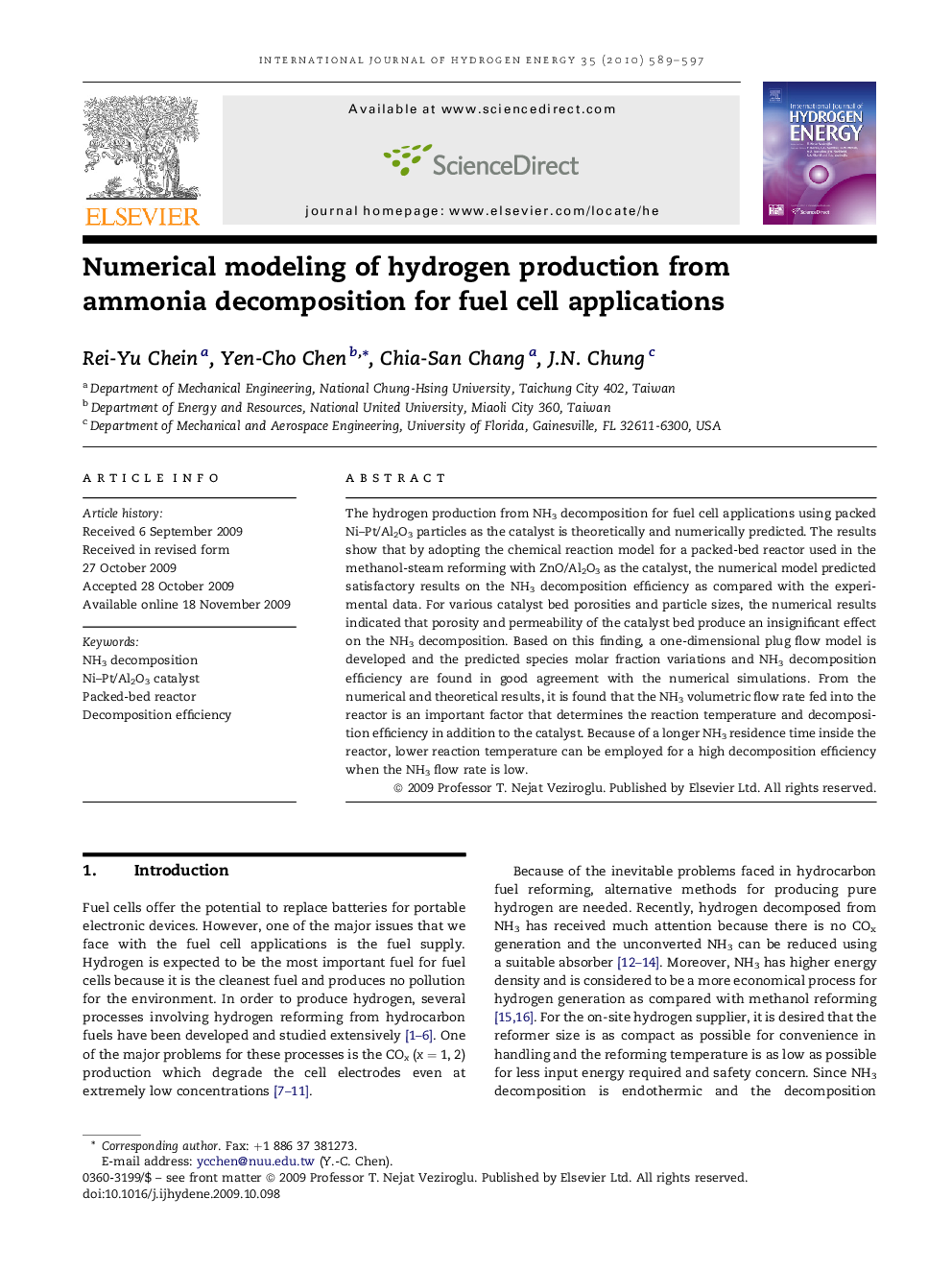| Article ID | Journal | Published Year | Pages | File Type |
|---|---|---|---|---|
| 1281041 | International Journal of Hydrogen Energy | 2010 | 9 Pages |
The hydrogen production from NH3 decomposition for fuel cell applications using packed Ni–Pt/Al2O3 particles as the catalyst is theoretically and numerically predicted. The results show that by adopting the chemical reaction model for a packed-bed reactor used in the methanol-steam reforming with ZnO/Al2O3 as the catalyst, the numerical model predicted satisfactory results on the NH3 decomposition efficiency as compared with the experimental data. For various catalyst bed porosities and particle sizes, the numerical results indicated that porosity and permeability of the catalyst bed produce an insignificant effect on the NH3 decomposition. Based on this finding, a one-dimensional plug flow model is developed and the predicted species molar fraction variations and NH3 decomposition efficiency are found in good agreement with the numerical simulations. From the numerical and theoretical results, it is found that the NH3 volumetric flow rate fed into the reactor is an important factor that determines the reaction temperature and decomposition efficiency in addition to the catalyst. Because of a longer NH3 residence time inside the reactor, lower reaction temperature can be employed for a high decomposition efficiency when the NH3 flow rate is low.
